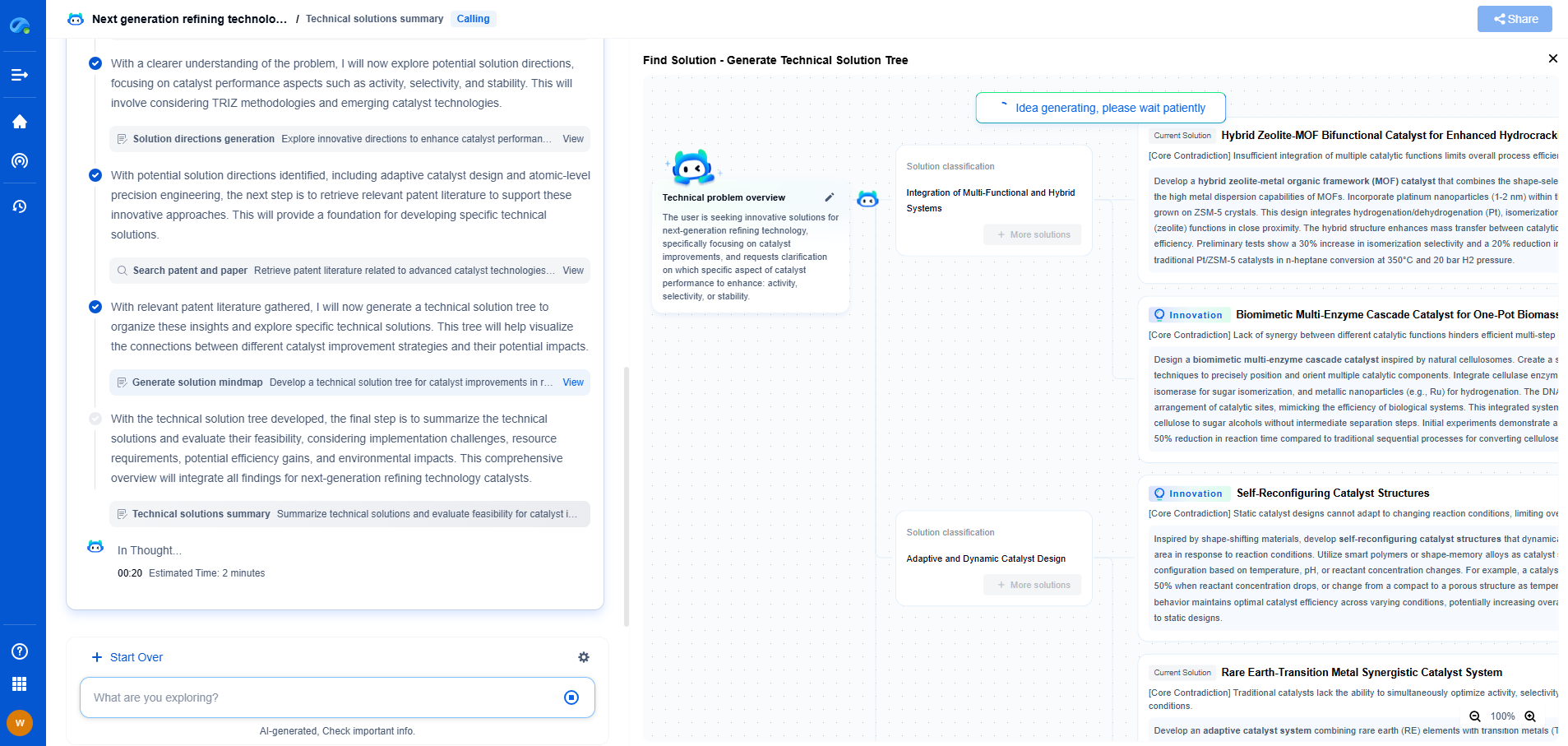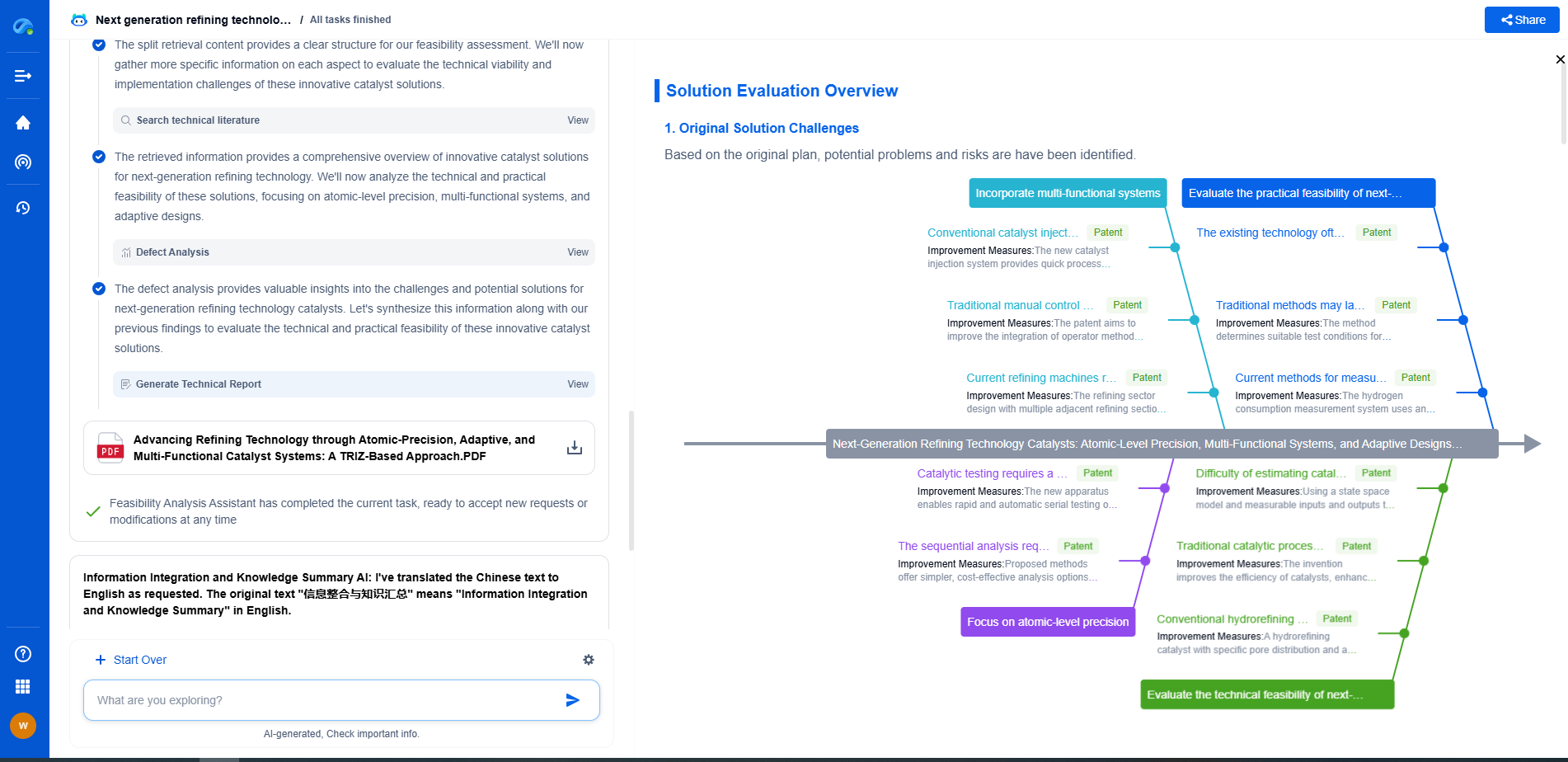EN 61672 Frequency Weighting Errors: A-Weighting vs. C-Weighting Misapplications
JUL 16, 2025 |
Frequency weighting plays a crucial role in sound level measurements, particularly when assessing environmental noise and occupational noise exposure. EN 61672 outlines the standards for sound level meters, including their frequency weighting characteristics. Among these, A-weighting and C-weighting are the most commonly used. However, misapplications of these weightings can lead to significant errors in noise assessment, potentially affecting compliance with noise regulations and guidelines.
The Basics of A-Weighting and C-Weighting
A-Weighting: Designed to mimic the human ear's sensitivity to sound frequencies, A-weighting filters out low and very high frequencies, which the average human ear doesn't hear as efficiently. This makes it suitable for general noise measurement and is often used in regulations related to community noise and workplace noise exposure.
C-Weighting: In contrast, C-weighting provides a more uniform frequency response across a wider range of frequencies. It includes the low frequencies that A-weighting typically filters out. This makes C-weighting more appropriate for measuring peak sound levels and environments where low-frequency noise is a significant concern.
Common Misapplications of Frequency Weighting
Using A-Weighting for Low-Frequency Noise: One of the most common misapplications is using A-weighting to assess environments where low-frequency noise is predominant, such as industrial settings with heavy machinery. A-weighting can underestimate the impact of low-frequency noise, potentially leading to insufficient noise control measures and health risks.
Incorrect Application in Regulatory Compliance: Another frequent error is applying A-weighting or C-weighting indiscriminately without considering the specific requirements of regulatory standards. For example, some standards might require C-weighting for peak noise level measurements, but users may mistakenly apply A-weighting due to habitual use or misunderstanding.
Implications of Weighting Errors
Underestimating Noise Exposure: Misapplication of frequency weightings can result in underestimating the actual noise exposure levels. A-weighting, when used inappropriately, might lead to the false conclusion that noise levels are within safe limits, potentially exposing individuals to harmful noise without appropriate protection.
Inaccurate Noise Assessments: Inaccurate frequency weighting applications can lead to flawed noise assessments, impacting the design and implementation of noise mitigation strategies. This can result in inadequate noise control solutions and continued exposure to harmful noise levels.
Best Practices for Appropriate Frequency Weighting
Understanding the Environment: Before selecting the frequency weighting, thoroughly assess the noise environment. Determine whether low-frequency noise is a significant component and choose the appropriate weighting accordingly.
Adhering to Standards: Familiarize yourself with relevant standards and guidelines that specify the use of particular frequency weightings for specific applications. Ensure compliance with these standards to achieve accurate and legally sound noise measurements.
Calibration and Verification: Regularly calibrate sound level meters and verify their performance to ensure that the frequency weighting is applied correctly. Routine checks help maintain the accuracy and reliability of noise assessments.
Conclusion
Navigating the complexities of frequency weighting, particularly A-weighting and C-weighting, requires a comprehensive understanding of their applications and limitations. Avoiding misapplications is critical for ensuring accurate noise assessments and compliance with noise regulations. By selecting the appropriate frequency weighting and adhering to established guidelines, professionals can enhance the effectiveness of their noise measurement practices and contribute to safer and healthier environments.
In the world of vibration damping, structural health monitoring, and acoustic noise suppression, staying ahead requires more than intuition—it demands constant awareness of material innovations, sensor architectures, and IP trends across mechanical, automotive, aerospace, and building acoustics.
Patsnap Eureka, our intelligent AI assistant built for R&D professionals in high-tech sectors, empowers you with real-time expert-level analysis, technology roadmap exploration, and strategic mapping of core patents—all within a seamless, user-friendly interface.
⚙️ Bring Eureka into your vibration intelligence workflow—and reduce guesswork in your R&D pipeline. Start your free experience today.
- R&D
- Intellectual Property
- Life Sciences
- Materials
- Tech Scout
- Unparalleled Data Quality
- Higher Quality Content
- 60% Fewer Hallucinations
Browse by: Latest US Patents, China's latest patents, Technical Efficacy Thesaurus, Application Domain, Technology Topic, Popular Technical Reports.
© 2025 PatSnap. All rights reserved.Legal|Privacy policy|Modern Slavery Act Transparency Statement|Sitemap|About US| Contact US: help@patsnap.com

